Cheniere to Fix Louisiana LNG Plant After Failing Pollution Test
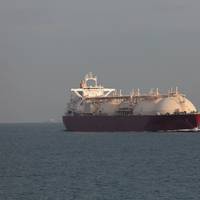
Top U.S. LNG exporter Cheniere Energy Inc said it will repair and replace equipment at its Louisiana terminal after tests showed it exceeded newly-imposed hazardous emissions limits on certain known carcinogens, but the work will have no material impact on operations.A round of testing showed at least one of Cheniere's turbines at its liquefied natural gas (LNG) export terminal in Louisiana failed the new standards, while the turbines in Texas at the company's only other U.S.
Cheniere Asks Biden Admin to Drop Pollution Rule
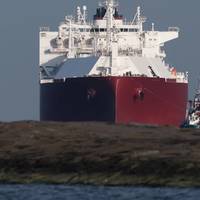
Cheniere Energy Inc has asked the Biden administration to exempt it from limits on emissions of cancer-causing pollutants, arguing they would force the top U.S. exporter of liquefied natural gas to shut for an extended period and endanger the country's efforts to ramp up supplies to Europe, according to documents reviewed by Reuters.The request imposes an uncomfortable dilemma on President Joe Biden’s administration as it tries to balance efforts to slash pollution from the fossil…
Maritime Safety Committee Meets
The Maritime Safety Committee (MSC) is meeting for its 101st session, with a busy agenda encompassing maritime autonomous surface ships, polar shipping, goal-based standards and other agenda items.A number of draft amendments will be adopted, including amendments to mandatory Codes covering the carriage of potentially hazardous cargoes: the MSC is set to adopt the draft consolidated edition of the International Maritime Solid Bulk Cargoes Code (IMSBC Code), and a comprehensive set of draft amendments to the International Code for the Construction and Equipment of Ships Carrying Dangerous Chemicals in Bulk (IBC Code).The MSC will be updated on the regulatory scoping exercise on maritime autonomous surface ships…
When it comes to Water Treatment, Experience Counts
Scienco/FAST, an experienced manufacturer of Marine sewage devices (MSD) recently received an extraordinary service order. Or, maybe it’s not that extraordinary.Scienco/FAST, a St. Louis, Missouri-based manufacturer has, over many years, had plenty of experience in dealing with archived orders. In fact, the firm just had a call from a client that needed to replace a part on a previously installed Scienco/FAST system. So what? Well, it turns out that the system was installed onto a domestic tugboat, way back in 1975. That more-than-43-year-old workhorse is still in service. And, so too is the Scienco/FAST system that’s been on board since it was launched.For its part, Scienco/FAST says that this is just one, of countless typical examples of how long the overbuilt Marine/FAST units can last.
Chemicals Found on Dutch Beach after Container Spill
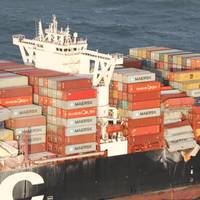
A load of dangerous chemicals that fell off one of the world's largest container ships into the North Sea washed up on a Dutch beach on Thursday, and more debris was expected to land overnight, officials said.The Dutch Defence Ministry said the loss of 270 containers from the freighter MSC Zoe on Wednesday, some of them thought to contain hazardous chemicals, was one of the biggest incidents of its kind, they said.It was unclear how many of the containers sank to the sea bottom…
Oil/Chemical Spills from Harvey Are Big, but Dwarfed by Katrina
More than 22,000 barrels of oil, refined fuels and chemicals spilled at sites across Texas in the wake of Hurricane Harvey, along with millions of cubic feet of natural gas and hundreds of tons of other toxic substances, a Reuters review of company reports to the U.S. Coast Guard shows. The spills, clustered around the heart of the U.S. oil industry, together rank among the worst environmental mishaps in the country in years, but fall far short of the roughly 190,000 barrels spilled in Louisiana in 2005 after Hurricane Katrina - the last major storm to take dead aim at the U.S. Gulf Coast. Harvey slammed ashore in Texas on Aug. 26, unleashing record flooding around Houston that destroyed countless homes, displaced around a million people and killed scores. The U.S.
Lax SMFF Enforcement a ‘Disaster Waiting to Happen’ -ROR

A top U.S. Coast Guard official said at a recent congressional oversight hearing that the Coast Guard “has not been aggressively enforcing the compliance” of vessel response plans filed under federal Salvage and Marine Firefighting (SMFF) regulations. The rules, derived from the Oil Pollution Act of 1990, are meant to prevent a worst-case discharge resulting from fire or explosion aboard a vessel. “The shocking admission by the Coast Guard that it cannot, and is not, enforcing its own marine firefighting rules should be a warning to all ship owners…
Nod for ACO Marine Sewage Treatment Units for use on Great Lakes
ACO Marine has received Transport Canada type-approval for its advanced Maripur NF and Clarimar MF wastewater management systems. “We are delighted to have received approval from Transport Canada. Certification delivers added assurance to Canadian shipowners that our technology is completely compliant with Canada’s stringent sewage discharge requirements for vessels operating in the Great Lakes,” said Mark Beavis, Managing Director, ACO Marine. He added: “Transport Canada certification, issued in December, underpins our strategic decision to grow our Canadian customer base, following the recent appointment of Ontario-based Marine and Offshore (MAO) as our new distributor for the region.
Easing the Transition to GHS Shipping Label Compliance
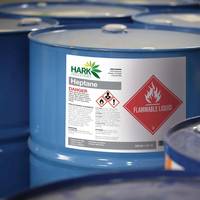
For domestic and international shippers, now is the time to satisfy GHS freight label compliance. The “Globally Harmonized System” (GHS) was established by the United Nations to create a unified system for identifying and communicating hazardous chemicals. In the U.S., OSHA set a June 2015 deadline for chemical manufacturers to use GHS compliant labels, followed by a December 2015 deadline for distributors, and June 2016 deadline for end users. Despite the harsh environments, extreme temperatures and rugged handling that freight is subjected to when shipped by land…
Losses Impacting Marine Cargo Insurance Market
Speaking at this year’s IUMI annual conference in Berlin, Nick Derrick, Chairman of IUMI’s Cargo Committee warned that large cargo losses were having a significant impact on the marine insurance sector. “Tianjin port covers an area of around 125 sq km”, says Derrick, “but only a small part of the port was affected by the explosion. Even so, we are expecting to see cargo losses of at least USD1.5 billion with some reports stating that the final figure could be as high as USD6 billion. Cargo insurers need to understand what the dollar loss might have been if the entire port had been affected, perhaps by a natural catastrophe such as an earthquake or tsunami”.
CMA CGM Operations Proceed in Tianjin
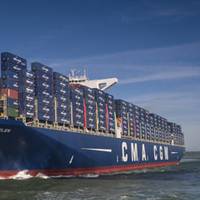
Container shipper CMA CGM said its vessel berthing and departures are back to normal with some expected delays following the August 12 explosions at the Port of Tianjin which killed more than 100 and injured hundreds more. CMA CGM said all of its crew members and local employees in Tianjin are safe and accounted for. All of CMA CGM’s terminals and off-dock depots in Tianjin are operating, but the shipper expects berth congestion, low productivity and longer port-stays to persist in Tianjin for the coming days. Compared with past few days, more trucks are now running inside the port area.
Tianjin Port Death Toll Rises to 114
Rescue crews have found 114 bodies, with 95 people still missing, 85 of whom are firefighters, after two huge explosions China’s Port of Tianjin where dangerous chemicals and goods are stored late Wednesday night, Xinhua news agency reports. Chinese authorities are still trying to ascertain what exactly caused a potent mix of chemicals to ignite. Authorities had earlier said that the warehouse contained calcium carbide, potassium nitrate and ammonium nitrate. The local media say that hundreds of tonnes of highly poisonous cyanide were being stored at the warehouse. The comments by Shi Luze, chief of the general staff of the Beijing military region, were the first official confirmation of the presence of the chemical at the hazardous goods storage facility at the centre of the blast.
Chinese Port Blast Kills 50, Injures 700 More
Two huge explosions tore through an industrial area where toxic chemicals and gas were stored in the northeast Chinese port city of Tianjin, killing at least 50 people, including at least a dozen fire fighters, officials and state media said on Thursday. At least 700 people were injured, more than 71 seriously, the Tianjin government said on its Weibo microblog, and the official Xinhua news agency said two fires were still burning. Wednesday night's blasts, so large that they were seen by satellites in space, sent shockwaves through apartment blocks kilometres away in the port city of 15 million people. Internet videos showed fireballs shooting into the sky and the U.S. Geological Survey registered the blasts as seismic events.
At Least 50 Dead in Chinese Port Blast, 700 Injured
Two huge explosions tore through an industrial area where toxic chemicals and gas were stored in the northeast Chinese port city of Tianjin, killing at least 50 people, including at least a dozen fire fighters, officials and state media said on Thursday. At least 700 people were injured, more than 71 seriously, the Tianjin government said on its Weibo microblog, and the official Xinhua news agency said two fires were still burning. Wednesday night's blasts, so large that they were seen by satellites in space, sent shockwaves through apartment blocks kilometres away in the port city of 15 million people. Internet videos showed fireballs shooting into the sky and the U.S. Geological Survey registered the blasts as seismic events.
'MV Cape Ray' Crew: Chemical Weapons Destruction Applauded
The Maritime Administration (MARAD) says it is proud to support the international effort to destroy Syrian chemical weapons and agents by providing the M/V CAPE RAY and its all-volunteer U.S. Merchant Marine crew to support this critical mission. One of MARAD’s 46 Ready Reserve Force (RRF) ships that stand ready to provide rapid movement of equipment and supplies during times of national and humanitarian emergencies, this vessel and its crew illustrate the important contribution our RRF ships and mariners make in supporting U.S. national and economic security. Since 1775, the U.S. In associated news, Pentagon Press Secretary Rear Adm. "This morning, Secretary of Defense Chuck Hagel called Navy Captain Rich Dromerhauser aboard the U.S.
US Ship 'Cape Ray' Neutralizes Syrian Sarin
All 581 metric tonnes of a precursor chemical for sarin gas that were removed from the Syrian Arab Republic and trans-loaded onto the U.S. Maritime Vessel Cape Ray in early July, have been destroyed with neutralisation technology aboard the ship while sailing in international waters of the Mediterranean Sea, informs the Organisation for the Prohibition of Chemical Weapons (OPCW). The precursor chemicals - methylphosphonyl difluoride, or DF - were neutralised with two Field Deployable Hydrolysis Systems (FDHS) that were installed on the Cape Ray for the purpose of destroying the most dangerous chemicals in Syria’s stockpile. The FDHS units mix the chemicals with fresh water and reagents and then heat the mixture, which reduces the toxicity of the chemicals by at least 99.9 percent.
ClassNK Amends Dangerous Chemicals Guidance
Classification society ClassNK has announced the release of the latest versions of its Rules and Guidance for the Survey and Construction of Steel Ships. These versions include all amendments dated May 30, 2014. The amendments made to the Rules and Guidance this time cover requirements related to “Dangerous Chemical Substances”, which were revised in order to reflect recent changes made to the International Code for the Construction and Equipment of Ships Carrying Dangerous Chemicals in Bulk (IBC Code). Both printed and CD-ROM versions of the 2014 edition of the Rules and Guidance are available for purchase online, and the PDF version…
IMO’s MEPC Meets for 66h Session
The Marine Environment Protection Committee (MEPC) of the International Maritime Organization (IMO) meets for its 66th session from 31 March to 4 April 2014, at IMO Headquarters in London. Items on the agenda include the consideration of proposed amendments to the MARPOL to make the audit scheme mandatory; the review of environmental provisions in the draft Polar Code and associated draft amendments to make the Code mandatory, and the implementation of energy-efficiency regulations and the Ballast Water Management and Ship Recycling Conventions. The MEPC will consider, with a view to adoption, draft amendments to MARPOL Annexes I through to VI to make the use of the IMO Instruments Implementation Code (III Code) mandatory.
New PIB Discharge Requirements
MO’s Working Group on the Evaluation of Safety and Pollution Hazards of Chemicals (ESPH 19), meeting at IMO Headquarters from October 21-25, has agreed to classify high-viscosity PIB (Polyisobutylene) as category X for carriage by ship, thereby prohibiting the discharge of cargo residues into the sea. The categorization and carriage requirements for high-viscosity PIB will be included in the annual MEPC.2/Circular on the Provisional categorization of liquid substances, usually issued by IMO on 17 December each year and will be proposed for inclusion in the next edition of the International Code for the Construction and Equipment of…
Chemical Tankship Cargo PIB Decided Category 'X'

IMO’s Working Group on the Evaluation of Safety and Pollution Hazards of Chemicals (ESPH 19), meeting at IMO Headquarters from 21 to 25 October, 2013, has agreed to classify high-viscosity PIB (Polyisobutylene) as category X for carriage by ship, thereby prohibiting the discharge of cargo residues into the sea. The categorization and carriage requirements for high-viscosity PIB will be included in the annual MEPC.2/Circular on the Provisional categorization of liquid substances…
Lloyd's Register: Statutory Alert

Statutory alert: Design, testing and location of devices to prevent the passage of flame into cargo tanks in tankers. Applicabilty: Builders, owners and managers of tankers carrying IBC Code Chapter 17 and 18 products. New requirements for the design, testing and location of devices to prevent the passage of flame into cargo tanks in tankers will come into force on January 1, 2013. These apply to both new and existing tankers and will require that devices are tested to ensure…
Resolve Salvage & Fire Expands in Singapore

Resolve Salvage & Fire (Asia), a division of United States based Resolve Marine Group, Inc., has expanded its presence in Singapore with the addition of Ajay Prasad, Operations and Technical Director. Prasad joins Resolve’s Managing Director- Singapore, Anuj Sahai, in the company’s Singapore office at #34-11 Centennial Towers, 3 Temasek Avenue, Singapore 039190. In addition to emergency and crisis response services, Resolve provides consulting services for operational and safety excellence to the international shipping and cruise industries, worldwide.
Marine Polluter Penalized $15k
A Prince Edward Island provincial court judge has ordered the vessel BBC Nordland to pay a $15k penalty for illegally discharging a pollutant in Canadian waters. On February 22, 2008, the BBC Nordland, a Gibraltar registered General Dry Cargo vessel, that was docked at the Port of Summerside, Prince Edward Island, spilled approximately 300 litres of hydraulic oil during offloading operations. As a result of the investigation carried out by Transport Canada, charges under the Regulations for the Prevention of Pollution from Ships and for Dangerous Chemicals of the Canada Shipping Act were laid against the vessel in Prince Edward Island provincial court.












